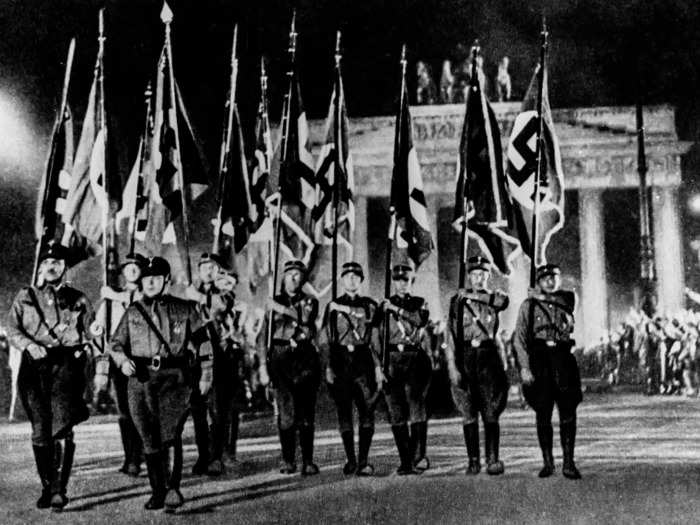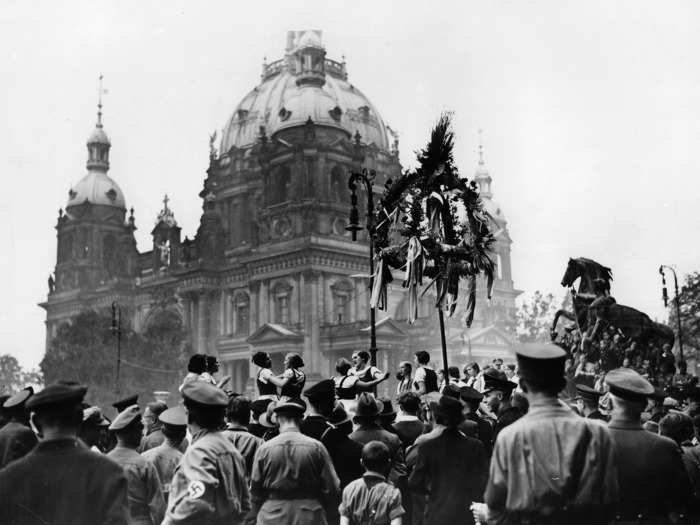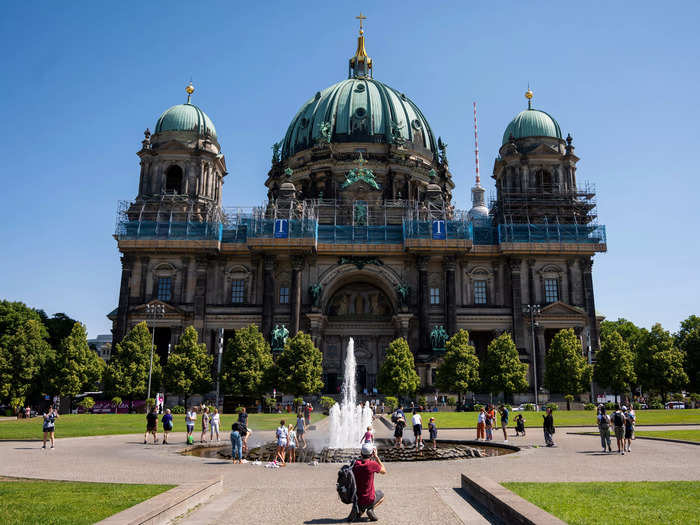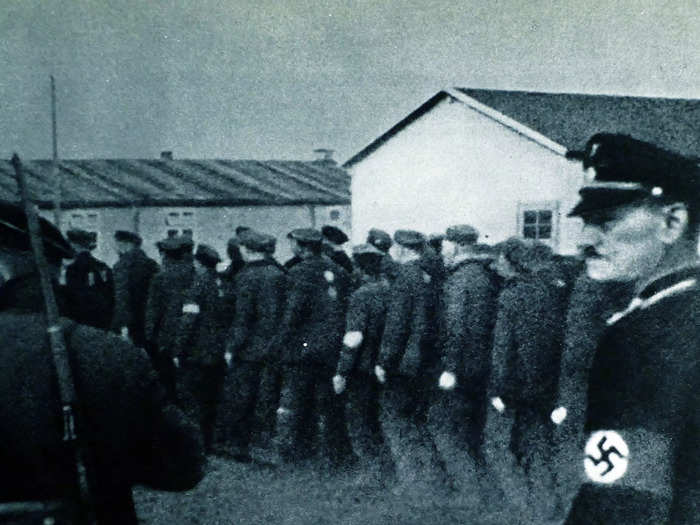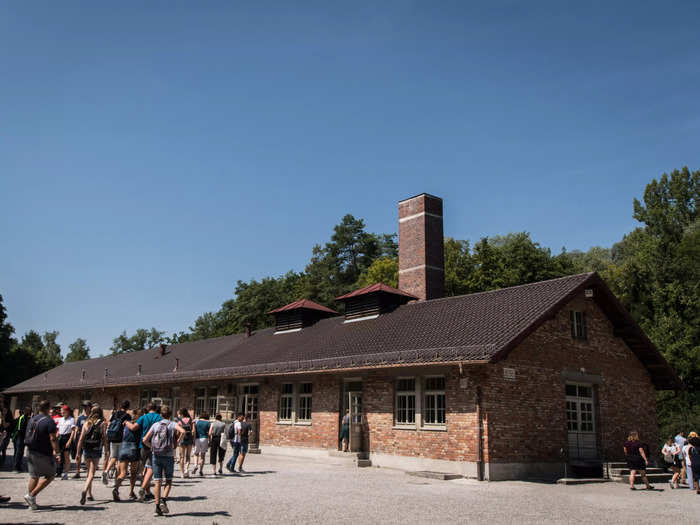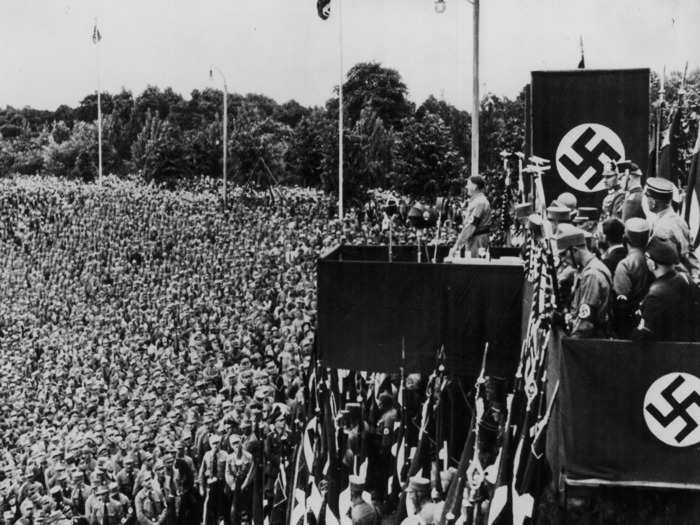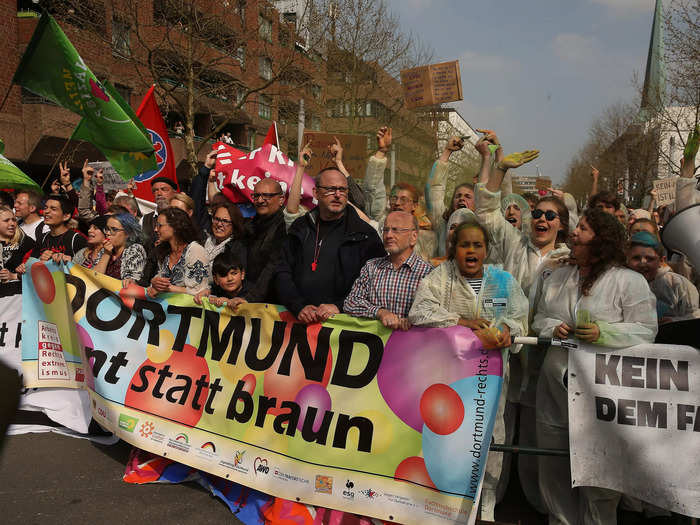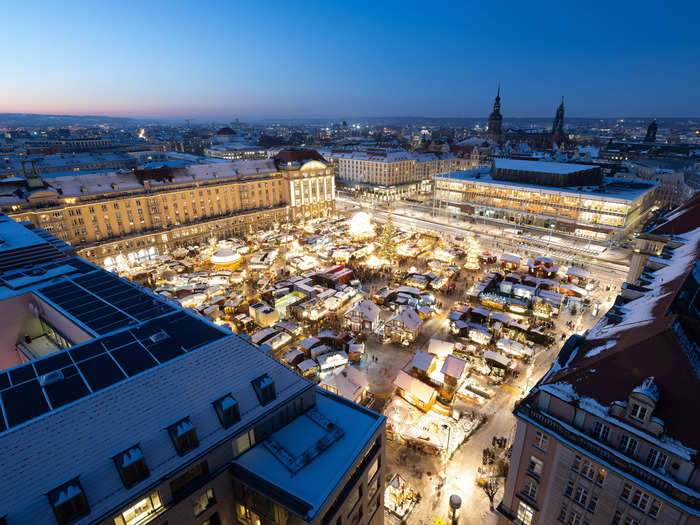A Nazi rally in Berlin on January 30, 1938; A crowd at the a Christmas market in Berlin on December 1, 2022.Mondadori via Getty Images; Jens Kalaene/picture alliance via Getty Images
- The Nazi party ruled Germany from 1933 until 1945, with Adolf Hitler as its leader.
- The Nazis spread antisemitism and were responsible for both the Holocaust and the start of World War II.
THEN: The Brandenburg Gate in 1933. Built in the late 1700s, this structure was historically a symbol of German pride, but Hitler turned it into a sign of Nazi power.
A Nazi parade at Brandenburg Gate in 1933. Marka/Universal Images Group via Getty Images
NOW: The Brandenburg Gate in 2022, now an iconic landmark and a symbol of a reunited Berlin after the Cold War.
A Christmas tree (L) with its top chopped off is seen next to a Chanukkah menorah in front of Berlin's landmark the Brandenburg Gate on December 21, 2022 TOBIAS SCHWARZ/AFP via Getty Images
THEN: The Reichstag building in 1933, which housed Germany's parliament in Berlin. Hitler used an arson attack at the building to seize power for the Nazis.
The Reichstag building on fire after an arson attack on February 27, 1933. Universal History Archive/Getty Images
NOW: The Reichstag building in 2022, which holds the lower house of Germany's national assembly — or Bundestag.
An Israeli flag flies next to a German flag and a European Union flag in front of the Reichstag building on January 26, 2022. Christian Ender/Getty Images
THEN: The Berlin Cathedral in 1935. The building's history dates back to the 1400s, but was badly damaged during World War II.
Young people dance in front of the Berlin Cathedral in October 1935. Herbert Hoffmann/ullstein bild via Getty Images
NOW: The Berlin Cathedral in 2022 is now a concert venue, and its dome has become a major part of Berlin's cityscape.
People cool off in the fountain in front of the Berlin Cathedral on July 19, 2022. Christophe Gateau/picture alliance via Getty Images
THEN: The Dachau concentration camp in 1933, which was the first camp opened by the Nazis for political prisoners. It eventually turned into a death camp for Jews.
Prisoners enter Dachau concentration camp in 1933. Universal History Archive/Universal Images Group via Getty Images
NOW: The Dachau concentration camp in 2018. It's now a museum and memorial site.
The Dachau concentration camp in 2018. Andrea Ronchini/NurPhoto via Getty Images
THEN: Dortmund in 1933. Antisemitism against the city's Jewish population increased after World War I.
German dictator Adolf Hitler speaking to a crowd at a Nazi rally, in Dortmund, in 1933. Hulton Archive/Getty Images
NOW: Dortmund in 2022. The city's residents have pushed back against neo-Nazi activity in recent years.
Counter-protestors carry a banner during a demonstration of right-wing extremists in Dortmund on April 14, 2018. David Young/picture alliance via Getty Images
THEN: Dresden in 1934. This city was a major hub for Germany's road and train network and was heavily bombed by Allied forces during World War II.
A view from the town hall tower over the destroyed city of Dresden, taken sometime between 1945 and 1950. Deutsche Fotothek/picture alliance via Getty Images
NOW: Dresden in 2019. After World War II, the city was rebuilt with modern buildings and saw an expansion in manufacturing.
A Christmas market in Dresden on December 13, 2022. Sebastian Kahnert/picture alliance via Getty Images

